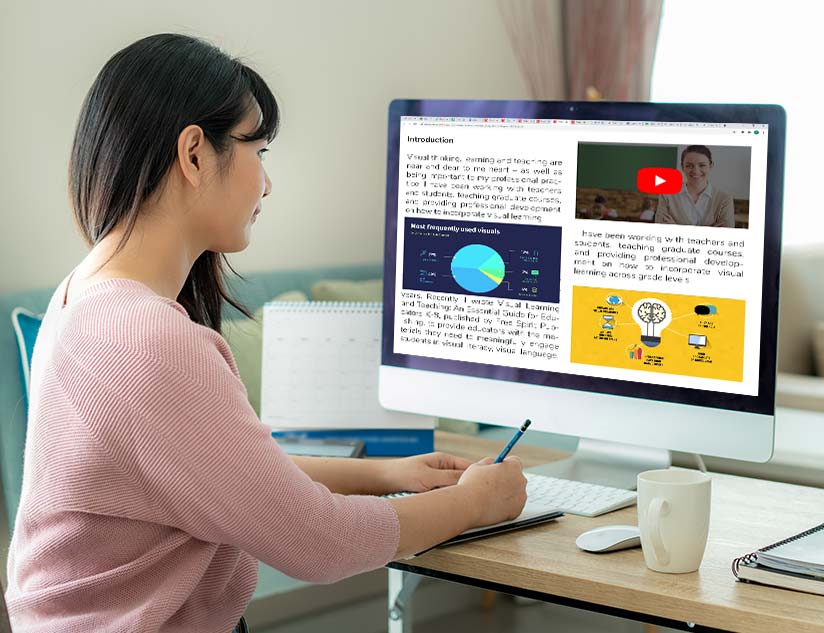Education for a long time has been closely linked with classroom-based learning where the teacher is solely responsible for imparting knowledge. However, in recent years, virtual learning has revolutionized the delivery of higher education. The onus is now on facilitating a student-centric learning process. After all, technology is woven into the lives of 21st century students who have grown up hooked to various devices.
Cut to 2020 and an unprecedented crisis has further fueled this adoption trajectory. As schools, colleges, and universities worldwide are shut down due to the COVID-19 pandemic, educators have had to resort to the virtual delivery of almost every type of course. Some are trying to recreate the classroom setting online through digital meeting software, while others are posting videos and helping students through online tutoring and practice programs. Everything from attendance to student assessments are being done online.
Schools and colleges are unlikely to open before September and even when they do, the fear of coronavirus transmission might make it difficult to get back to normal classes. This begs the question – has the future become the present in higher education?
Challenges in Implementing Virtual Learning for Higher Education
1. How Online Learning Compares with Traditional Learning
In a 2018 survey spanning prominent global universities across 45 countries, it was found that 63% of the decision makers at these universities expected major institutions to offer full-time online degrees by 2030. Nevertheless, only 24% believed that such virtual courses would become more popular than traditional ones.
Many educators believe that interacting with peers, teachers and supervisors constitutes a real university environment and is vital for a deep understanding of any subject. For instance, the Vice Provost for global engagement at the University of Rochester compares online learning with visiting new places by just looking at their videos online.
To deal with this problem, only lectures that require less human interaction can be recorded as multimedia presentations, that students can watch at their own pace. Regardless, the COVID-19 crisis has shown us that collaborative learning is possible even through virtual classroom software that offers the right features.
In addition, an advanced virtual learning platform offers much more resources for research-based teaching, personalized problem solving, and mentorship.
2. Dealing with Learner’s Anxieties Among Teachers
Many teachers might not be as comfortable with a digital platform and online resources as their students are. Some amount of resistance to learning technology is only natural. It is important for institutions to remember that the idea is not to make teachers feel inadequate or threatened by change. Not all faculty members are adept in virtual classroom technologies. Therefore, effective teacher training is the first step to implementing virtual learning for higher education.
“My department has been especially careful about helping faculty make the right choices for their own teaching philosophy and learning outcomes, so we have been working hard to offer options for, e.g., doing a seminar-style class online without synchronous video. I feel like my department has been caring for faculty to help them prepare, and hopefully this care will transfer onto students,” says Maha Bali, associate professor of practice, Center for Learning and Teaching, American University in Cairo, in an article on Inside Higher Ed.
3. Overcoming the Resistance of Students to Take an Active Position
Students also tend to be resistant to change. Having spent a large portion of their academic life being passive recipients of information, taking a more active role in their own learning will be a new experience for many. The passive approach of traditional classroom teaching has made many students lazy, lacking the motivation to try something new.
Once again, an advanced digital platform, like MagicBox™, can prove invaluable in overcoming this challenge. With the ability to easily integrate interactive, multimedia content for enhanced engagement, this virtual learning platform can motivate students to take an active role in their education. Elements such as gaming, simulations and more make the entire learning experience fun, while fostering a competitive spirit. In addition, older teens and young adults in higher education are likely to appreciate the level of autonomy and self-determination that such platforms offer.
4. Dealing with Technological Setbacks
Chinese social media is full of anecdotal accounts of how students have to turn off their video feeds to block out excessive sounds in the background. A group of students at the Chinese University of Hong Kong had to change their usernames to “No Sound,” to alert the professor that they were speaking without the microphone turned on.
While these are just examples of teething problems, there are other important issues to be dealt with. Shifting to online learning has to be done with equity in mind. For instance, the faculty needs to be instructed in using the technology seamlessly, while a responsive support team needs to be available to troubleshoot problems quickly.
The highly experienced team of professionals at MagicBox™ are always ready to offer any help that schools and universities might require in deploying their courses while providing ongoing support, regular upgrades of the platform, and new features.
The School of the Future
It is quite evident that virtual classroom software like MagicBox™ is highly customizable to solve the various challenges that might come in the way of providing higher education through the digital route. Over 35% of educators in the US believe that colleges and universities today are more responsive towards the needs of non-traditional students. Personal electronic devices, like smartphones and tablets, are changing student/teacher interactions. Degree-programs are becoming more self-paced and flexible, thanks to the feature-rich, versatile learning platforms that allow:
- Universities to create and build their own courses and distribute them easily online in the form of self-learning modules.
- Conversion and enhancement of content for all devices, including iOS, Android, and Windows.
- Distribution of content in a compliant environment with special emphasis on student-data privacy and accessibility.
- Access to robust analytics for educational institutions to evaluate the efficacy of their course modules and modify them accordingly, while teachers can offer personalized student support.
Dealing with the COVID-19 crisis has been easier with virtual classrooms, which is ensuring minimum disruption to education all across the world. This experience will impact decisions regarding education delivery going forward. Virtual learning platforms could very well define the future of higher education.
Are you ready to be the change you want to see? Contact us to learn more about MagicBox™.











